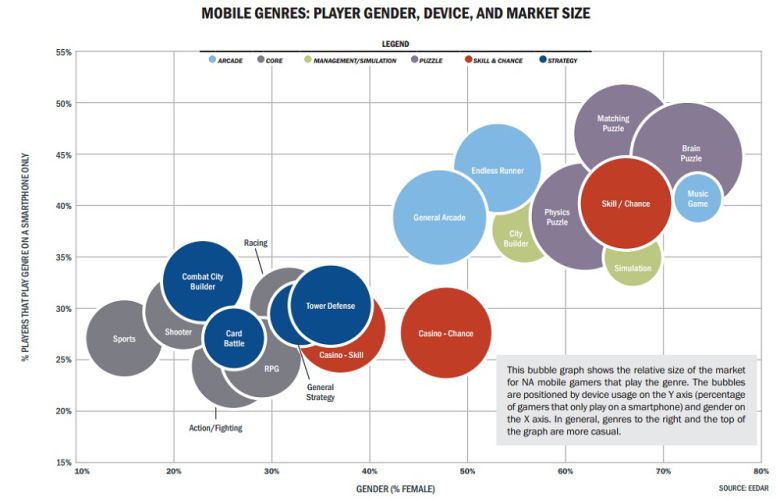Mobile games are huge right now, but that doesn’t mean every company that produces them will see a long-term success. This is mainly due to the abundance of games available right now, as well as having them be as full-featured as other top-of-the-line releases.
EEDAR recently compiled a report explaining how companies can succeed with their game products in an ever-growing North American market, which was posted by GamesBeat earlier this week.
The report shows that 194.8 million consumers have access to a smartphone or tablet, providing great access to some form of gaming experience. Out of those, 141.9 million people take part in games, expanding the market to a whopping $4.6 billion for the previous year.

“We are finding a lot of the people playing on mobile are already playing core games on consoles,” said Patrick Walker, the head of insights at EEDAR. “We see huge growth, but only a small number of game publishers are profiting from a small percentage of mobile gamers who pay. Mobile is more and more saturated. The big winners are winning big.”
Working off of a database of 80 million researched data points across 50,000 different game products, a portion of the report is available for viewing here, with the rest available for purchase. It breaks down some of the more basic steps in finding success with a game, such as segmenting properly into a market, as well as following five parts: discovery, engagement, virality, monetization and churn.
Such a program can be successful, as companies like King and Supergiant have proven with Candy Crush Saga and Clash of Clans, respectively. However, the report feels that a portfolio analysis wouldn’t hurt either, looking for ways to expand upon a userbase and appeal to a greater market as a result.
Surprisingly enough, a little can go a long way as well when it comes to games on the market. GamesIndustry International found that the study also breaks down how six percent of U.S. mobile gamers can generate more than half of the overall revenue for the industry, at 51 percent. The “whales,” as they’re dubbed, spend at least $10 a month on in-game purchases, while those spending even heavier can go through as much as nearly $300 in a year.
Those interested in finding success with games should definitely give the report a read.

